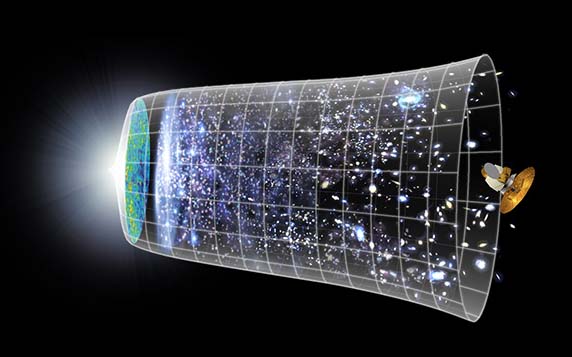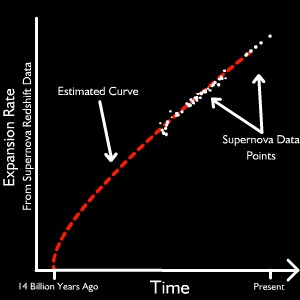Consequences of the Big Bang
Using the wealth of empirical information from redshift surveys, particle accelerator experiments, and detailed studies of galactic evolution and CMB anisotropy, scientists can predict what types of conditions must have been present in the early Universe. Combining these parameters with the theoretical framework provided by General Relativity, cosmologists have generated a powerful model capable of describing both the history and fate of the Universe.

Satellites, such as WMAP, provide scientists with important information about the history and fate of the Universe.
The Age of the Universe
We can estimate the age of the Universe by uncovering the ages of some of the cosmic bodies in the Universe.
- Earth: Using radioactive dating, we have discovered that the approximate age of Earth is 4.2 billion years. So, the Universe must be older than that.
- Stars: We can observe many stars at different ages. We can deduce from this that the oldest stars formed 10 to 12 billion years ago. So, the Universe must be older than that.
Cosmologists estimate the Universe to be 13.7 billion years old. How did they arrive at that?
Accurately Determining the Age of the Universe

Analyzing data from supernovae is one technique scientists use to estimate the age of the Universe.
Cosmologists get a more accurate estimate for the age of the Universe by analyzing the Universe's expansion rate. By studying the history of the expansion rate using redshift data from distant galaxies and supernovae, we can project the expansion of space back to the beginning of time: the Big Bang. Running the expansion model backwards in this way tells us that the Universe is roughly 13.7 billion years old, by our most accurate estimates.
 [2.9a] Down the Rabbit Hole: Determining the Age of the Universe
[2.9a] Down the Rabbit Hole: Determining the Age of the Universe


